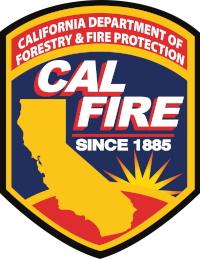Sacramento, CA…The Department of Forestry and Fire Protection (CAL FIRE) continues to celebrate and learn from traditional cultural practices while honoring the stewardship and heritage of tribal partners in the Jackson Demonstration State Forest. As an extension of this, a prescribed burn at Jackson Demonstration State Forest (JDSF) near Fort Bragg earlier this year was the first step in a long-term restoration project to improve acorn health and harvesting potential in the area. These forests, called demonstration state forests, managed by CAL FIRE, offer a living laboratory for restorative ecological research and an ideal landscape for interested local tribes to practice Traditional Ecological Knowledge, with the support from state partners.
“CAL FIRE is committed to working with and learning from our tribal partners to better integrate tribal organizations and cultural fire practitioners into prescribed fire projects across the state,” said Matthew Reischman, Deputy Director for Resource Management at CAL FIRE. “The identification of this site for restoration through the use of prescribed fire, as a means to restoring a cultural resource is a great example of the value of this kind of cooperation, both for collaborative forest management and as part of our work to honor local cultural traditions.”
In collaboration with the Sherwood Valley Band of Pomo Indians, this site and others were identified as having the specific characteristics to make a productive acorn collection site. This includes flat, open ground with large, developed tan oak trees that are easily accessible by tribal elders and others. The challenge: tan oak acorns, once dropped to the ground, are quickly infested with weevils, which make them unfit for collection.
However, in using prescribed fire to burn the understory, acorns infested with weevils are then burned off, and when new acorns drop, the spread of weevils is slowed. This allows more time for acorns to remain on the ground and be collected, furthering a centuries old cultural tradition and empowering future generations to learn the process. Reintroducing fire to this acorn grove also helps remove ground fuels and tripping hazards, and increases wildfire resiliency, making way for future cultural burns led by local tribal partners.
The application of tribal knowledge and practices to the landscape is a vital element of CAL FIRE’s vision to enhance California’s natural resource systems. CAL FIRE recognizes the role of tribal stewardship in meeting the state’s goals to create a more resilient California.
“This is a very exciting time for our region,” said Mendocino Unit Deputy Chief Brandon Gunn. “We are working hard to build and maintain relationships with our local tribal partners to get to a place where we can learn from each other and accomplish things that will be a benefit to the entire community. Our local tribes have so much valuable information to share.”
The CAL FIRE Mendocino Unit is also working on a plan to provide fire safety training for CAL FIRE’s local Tribal partners while inviting them to train CAL FIRE personnel on the importance of cultural burning and how it helps with the gathering and production of natural resources. This was a request from the Sherwood Valley Band of Pomo Indians during ongoing outreach conversations.
To learn more about this project and CAL FIRE’s work with Tribes, see these links:
Jackson Demonstration State Forest Acorn Grove Burn (Video)
Building Leadership, Trust, and Capacity for Cultural Burning
###



